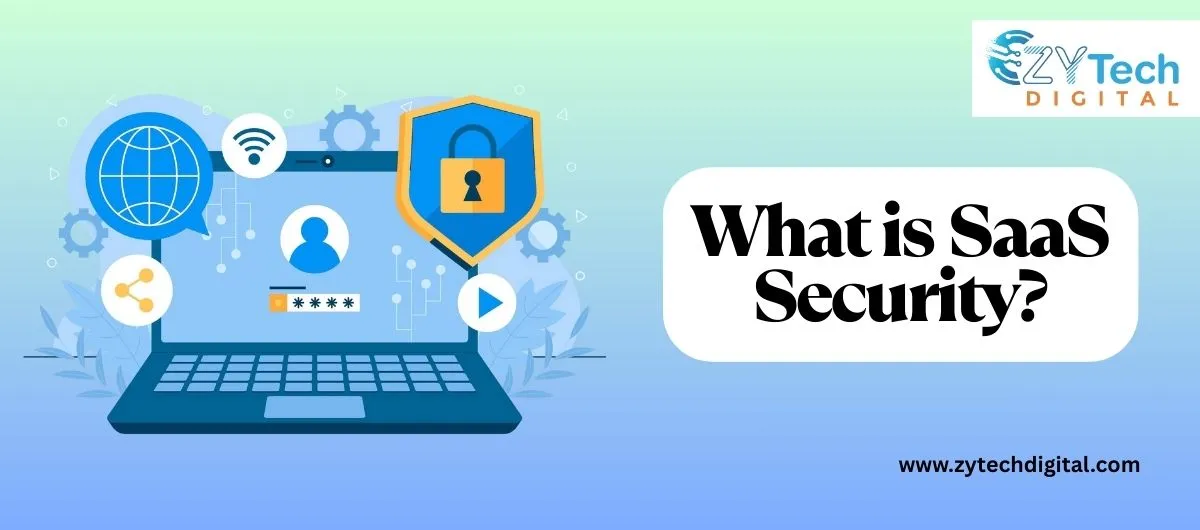
- May 22, 2025
- admin
- 0
As someone who works closely with cloud-based software daily, I know firsthand how important security is when managing Software-as-a-Service (SaaS) platforms. SaaS security is not just a tech buzzword; it’s a vital strategy for protecting sensitive business data, applications, and user identities in the cloud.
In this guide, I’ll walk you through everything I’ve learned about SaaS security: what it is, why it matters, the major risks, and how organisations can stay protected. If you’re looking to strengthen your SaaS environment, understand key principles like identity and access management, or simply want to rank higher on SERPs by learning SEO-friendly SaaS practices, this is the guide for you.
What is SaaS Security?
SaaS security refers to the set of practices, technologies, and policies designed to protect data, applications, and identities in a cloud-based software environment. It aims to prevent threats such as data breaches, unauthorised access, and ransomware attacks while ensuring that users can safely access cloud resources.
From my experience, strong SaaS security involves more than just locking down access. It’s about configuring applications correctly, monitoring for suspicious behaviour, and ensuring compliance with ever-changing data protection laws.
Take Control of Your SaaS Security – Talk to Our Experts!
Why is SaaS Security Important?
With more organisations moving to cloud platforms like Google Workspace, Microsoft 365, Salesforce, and Slack, securing these SaaS tools is now a top priority. Let me break down why this matters:
1. Protecting Sensitive Data
Your SaaS applications store vital customer data, employee records, and internal documents. Without strong security, this information is vulnerable to leaks or theft.
2. Compliance Requirements
Regulations such as GDPR, HIPAA, and SOC 2 require organisations to implement data protection measures. Failing to comply can result in hefty fines.
3. Preventing Cyber Threats
SaaS platforms are common targets for cybercriminals using phishing, malware, and brute-force attacks. SaaS security blocks these attacks at multiple levels.
4. Building User Trust
Your customers and stakeholders expect their data to be protected. By demonstrating robust SaaS security, you build trust and credibility in the market.

The Pillars of SaaS Security
Over the years, I’ve found that effective SaaS security rests on several core pillars. Each one plays a unique role in protecting the SaaS environment.
1. App Discovery
You can’t secure what you don’t know exists. App discovery identifies all SaaS apps in use, approved or shadow IT, so you gain full visibility into your environment.
2. Configuration Management
Misconfigured apps are a leading cause of SaaS vulnerabilities. Configuration management ensures all settings follow security best practices.
3. SaaS Compliance
This pillar ensures that your SaaS usage meets industry standards. It includes regular audits, vendor assessments, and monitoring data-handling policies.
4. Identity and Access Management (IAM)
IAM is about controlling who has access to what. Using role-based access control (RBAC), multi-factor authentication (MFA), and single sign-on (SSO), you can prevent unauthorised access.
5. Data Security
Encryption for data at rest and in transit, access controls, and backup solutions all fall under data security. These tools help safeguard sensitive assets.
6. Threat Detection & Behaviour Analytics
By analysing user behaviour, you can detect anomalies, like unusual login locations or high download activity, that may indicate threats.
7. SaaS Security Architecture
A good security architecture integrates tools and processes into your SaaS environment seamlessly. It supports scale while ensuring strong protection.
Common SaaS Security Risks and Threats
Understanding common threats is key to building a resilient SaaS security posture. Here are some I’ve encountered:
1. Data Breaches
Unauthorised access to confidential data can result in financial and reputational damage. Tools like Data Loss Prevention (DLP) and encryption help mitigate this.
2. Misconfigurations
Poor app settings can expose sensitive information. Automated tools can help enforce configuration policies and catch errors early.
3. Insider Threats
Whether intentional or not, insiders can compromise security. Regular training, IAM, and activity monitoring help minimise these risks.
4. Shadow IT
Employees often use unauthorised apps without IT approval. Regular app discovery and strict SaaS policies help eliminate shadow IT.
Benefits of SaaS Security
When you implement solid SaaS strategies, the benefits extend across your organisation:
- Increased Visibility and Control: Get a full view of app usage and data flow.
- Better Compliance and Risk Management: Avoid fines and audits.
- Enhanced Data Protection: Keep your data safe from loss or theft.
- Reduced Threat Exposure: Spot threats early with real-time monitoring.
- Operational Efficiency: Automate key processes to save time and resources.
- Business Continuity: Recover quickly from incidents with backups and DR plans.
- Cost Savings: Avoid breaches, fines, and inefficiencies that drain budgets.
Key SaaS Security Challenges
Despite its advantages, securing SaaS environments presents challenges:
- Complex Ecosystems: Managing numerous apps with different settings is tough.
- Constantly Evolving Threats: New cyber threats emerge all the time.
- Regulatory Compliance: Staying compliant with GDPR, CCPA, ISO 27001, and others takes effort.
- Limited Visibility: Many businesses lack insight into how their SaaS tools are used.
- Integration Issues: Security tools must work with diverse apps and infrastructure.
SaaS Security Best Practices
From my work with IT teams, here are the best practices I always recommend:
1. Adopt SaaS Security Posture Management (SSPM)
SSPM solutions continuously assess and improve your SaaS settings, ensuring ongoing compliance and visibility.
2. Implement Strong Authentication
Use advanced MFA like FIDO2 hardware tokens or mobile device biometrics, not just basic 2FA. These are much harder to spoof.
3. Conduct Regular Security Audits
Identify vulnerabilities before they’re exploited. Schedule compliance checks quarterly at a minimum.
4. Manage Vendor Risk
Vet SaaS vendors thoroughly. Make sure you follow security standards and offer features like audit logs and encryption.
5. Enforce Principle of Least Privilege (PoLP)
Give users only the access they need to do their jobs, nothing more. This limits damage if credentials are compromised.
6. Monitor User Behaviour
Look for unusual activity like logins from new countries or massive data downloads. Behaviour analytics tools can automate this.
7. Automate Access Reviews
Remove stale access permissions regularly. Employees who no longer use an app shouldn’t retain access to it.
Emerging Trends in SaaS Security
Here’s what’s coming next in SaaS :
Zero Trust Architecture (ZTA)
Zero Trust assumes nothing is safe until verified. It enforces granular access control and continuous user verification.
AI-Powered Threat Detection
Artificial intelligence and machine learning help identify complex threats faster than traditional tools.
Integrated SaaS Platforms
Unified platforms that manage discovery, compliance, access control, and incident response are becoming the standard.
Final Thoughts
If you’re like me and rely on SaaS tools daily, ignoring security isn’t an option. SaaS security is essential to protect sensitive data, meet compliance standards, and support business continuity.
By implementing strong identity and access controls, continuously monitoring configurations, and embracing automation, you can stay ahead of threats and safeguard your cloud-based operations.
Whether you’re a business owner, IT manager, or cybersecurity professional, investing in a proactive SaaS security strategy isn’t just smart, it’s necessary for long-term success.
READ MORE: SaaS Product Development: Structures, Trends & Best Practices
Frequently Asked Questions (FAQs) on SaaS Security
As organisations increasingly adopt cloud-based solutions, robust SaaS measures are crucial to safeguard sensitive information, maintain regulatory compliance, and build trust with customers.
Key components include Identity and Access Management (IAM), data encryption, multi-factor authentication (MFA), threat detection, and compliance monitoring to ensure comprehensive protection.
MFA adds an extra layer of security by requiring users to provide two or more verification factors, something they know (password), something they have (security token), or something they are (biometric verification), before granting access.
The Zero Trust model assumes that threats exist both inside and outside the network. It mandates strict identity verification for every user and device attempting to access resources, regardless of their location.
SSPM is a proactive approach that continuously monitors and manages the security configurations of SaaS applications to identify and remediate vulnerabilities, ensuring compliance and reducing risks.
Shadow IT refers to unauthorised SaaS applications used within an organisation. It can lead to security gaps, data leaks, and compliance issues, making it essential for organisations to monitor and manage all SaaS applications in use.
Speak With Expert
Fill The Form Below

